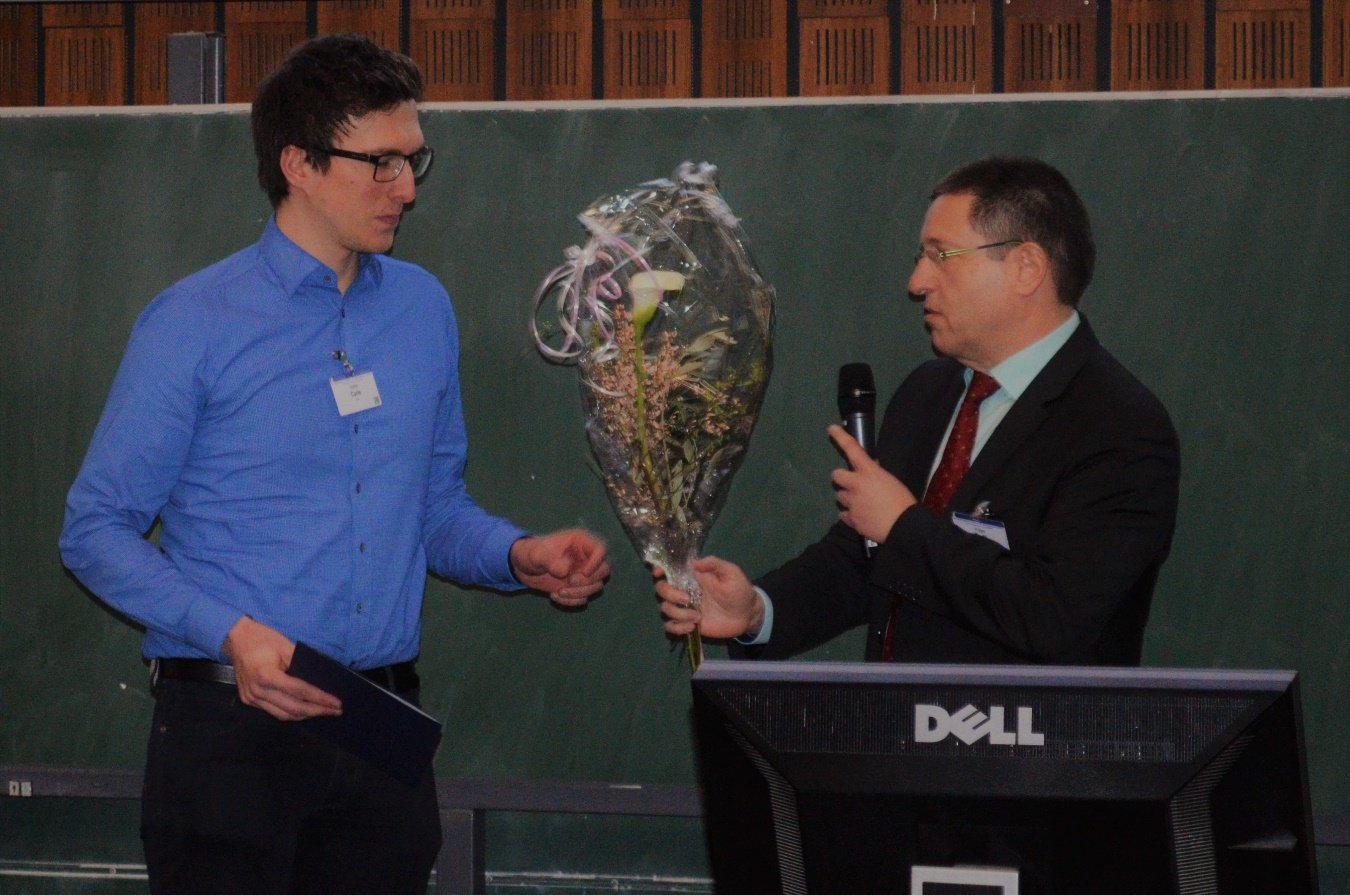Need Help?
22 March 2018
Congratulations to the Best Poster Award Winner at the 3rd German Pharm-Tox Summit, Göttingen, Germany, 2018 (Sponsored by Toxins)
The editorial team of Toxins would like to congratulate the winner of the Best Poster Award at the 3rd German Pharm-Tox Summit—Stefan Carle.

Here is the title and abstract of his work:
Title: Exploitation of Non-Toxic Diphtheria Toxin for Molecular Trojan Horse Development
Authors: Stefan Carle, Maximilian Fellermann, Holger Barth
Affiliation: Institute of Pharmacology and Toxicology, University of Ulm Medical Center, Germany
Abstract:
Molecular transport of therapeutic molecules across cellular membranes is highly limited by their size and charge. Only small, lipophilic molecules can effectively diffuse over such boundaries. Therefore, complex proteins are dependent on active transport mechanisms, such as receptor-mediated endocytosis. This issue is especially relevant for the targeted delivery of drugs and diagnostics to highly restricted body compartments such as the central nervous system and brain, which are further protected by the enclosed endothelium of the blood–brain barrier (BBB). The BBB is an efficient protection for the brain and central nervous system (CNS) against potentially harmful molecules, however, it is also an obstacle for possible drugs targeting pathologies in the brain and CNS. Hence, molecular transporters are needed to circumvent the BBB.
Diphtheria toxin (DT) displays properties that make it a promising candidate for the development of a so called molecular Trojan horse. As an AB-toxin, consisting of an enzymatically active A- and a binding/translocation B-domain, it shows specific uptake in most cell types and is able to deliver N-terminal cargo fusions into the cell. Furthermore, studies suggest that beside transport into cells, also transport across cellular layers is possible.
Here we show a strategy to generate molecular transporters based on an enzymatically inactive, non-toxic DT mutant, called CRM197, which is already in use as a vaccine carrier molecule and has a well validated safety profile. Based on morphological and biochemical evaluation, the enzymatic inactivity was confirmed. Competition assays with wild type (WT) DT demonstrated high receptor specificity. Using fluorescence microscopy, internalization of an N-terminally labeled CRM197 was shown into HeLa cells and human endothelial cells, which is especially interesting, since these cells will be used to generate a BBB model for further transcytosis studies.

